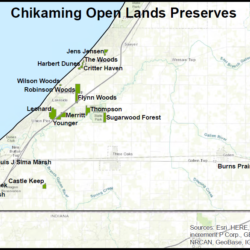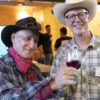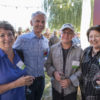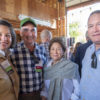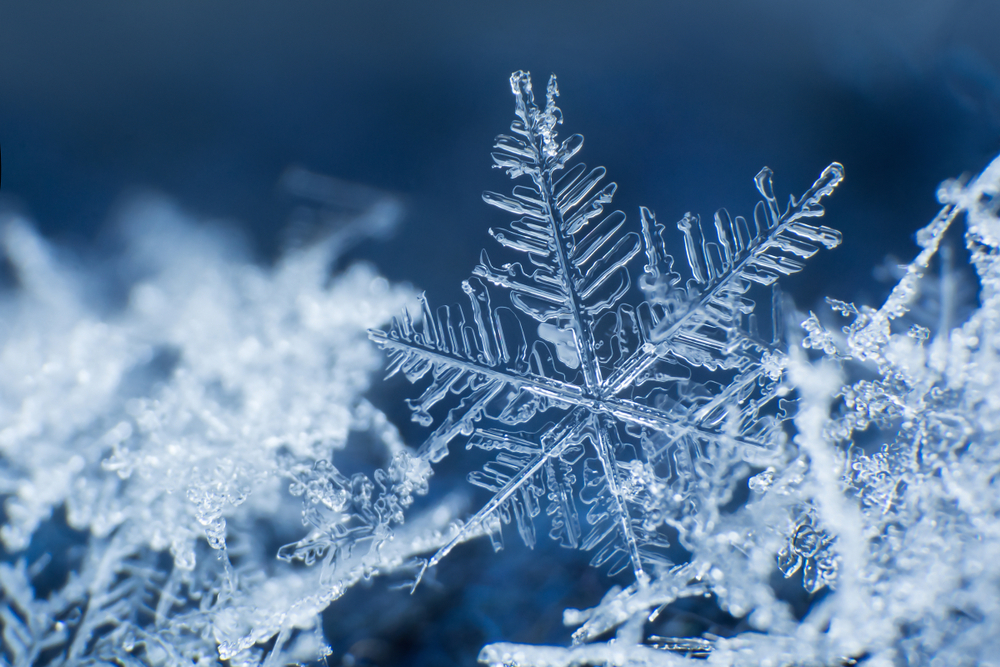
There are dendrites accumulating outside!
Posted on January 7, 2022
By which we mean, "it's snowing."
Do you ever wonder why some snow is big, fluffy, and piles up quickly, like today, and some is smaller and just blows around without accumulating much, like Wednesday? Is it true that no two snowflakes are alike? Let's discuss snowflakes.
Snowflakes are formed from water vapor that condenses directly into ice inside of clouds. A drop of water vapor freezes onto a dust particle in the upper atmosphere, forming a "seed crystal." More water vapor droplets then condense and freeze on the surface of the seed crystal, forming patterns as the crystal grows. Water molecules tend to adhere to each other in a hexagonal lattice, which accounts for a snowflake's familiar six-sided shape.
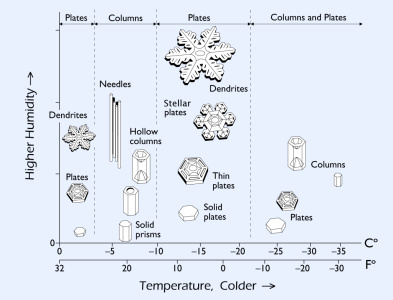
As illustrated in the image above, there are four main kinds of snowflakes: needles, dendrites, plates and columns. A snowflake's shape is determined by the temperature, and to a lesser extent the humidity, in the upper atmosphere where it is formed. At temperatures near freezing, we get little needles that don't accumulate much on the ground. At -10 degrees C to -18 degrees C, dendrites form, which are the classic six-armed crystals that we associate with snowflakes. These are bigger, and will accumulate faster. As it gets colder, very thin plates form, which take much longer to accumulate. Finally, at very cold temperatures below -30 degrees C, we get columns, which accumulate even slower. Wednesday, we had plates. Today, dendrites!
So are any two snowflakes exactly the same? Probably not. Since each snowflake travels slightly different paths from the clouds to the ground, they encounter slightly different atmospheric conditions along the way. As a snow crystal falls, it might be forming its intricate "arms" in one pattern, and then seconds later experience a change in temperature or humidity that causes it to switch up and form in a new way. So, it's pretty safe to say that every snowflake really does have its own special shape and pattern.
So why not get outside and get a close-up look? Tag us (#ChikamingOpenLands) in your pics of the accumulating dendrites on social media.

